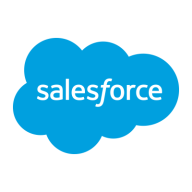

Tableau and Yellowfin are competing products in the business intelligence and analytics space, with each showcasing distinct advantages. Yellowfin appears to have the upper hand due to its emphasis on features like collaboration and mobile functionality.
Features: Tableau is known for capabilities like robust data visualization, dynamic dashboards, and extensive integration options. Yellowfin offers automated insights, collaborative storytelling, and advanced mobile functionalities, providing a narrative-driven analytic experience that emphasizes collaboration and accessibility.
Ease of Deployment and Customer Service: Tableau provides a straightforward installation process with comprehensive documentation and a strong support network. Yellowfin offers a flexible deployment model with cloud and on-premises options, combined with a customer service focus, providing advantageous operational conditions.
Pricing and ROI: Tableau generally involves a higher upfront cost but delivers swift time-to-value due to its intuitive features and powerful analytics. Yellowfin provides a competitive pricing structure and substantial ROI through its emphasis on collaboration and mobile analytics, making it a cost-effective solution.

Tableau is a tool for data visualization and business intelligence that allows businesses to report insights through easy-to-use, customizable visualizations and dashboards. Tableau makes it exceedingly simple for its customers to organize, manage, visualize, and comprehend data. It enables users to dig deep into the data so that they can see patterns and gain meaningful insights.
Make data-driven decisions with confidence thanks to Tableau’s assistance in providing faster answers to queries, solving harder problems more easily, and offering new insights more frequently. Tableau integrates directly to hundreds of data sources, both in the cloud and on premises, making it simpler to begin research. People of various skill levels can quickly find actionable information using Tableau’s natural language queries, interactive dashboards, and drag-and-drop capabilities. By quickly creating strong calculations, adding trend lines to examine statistical summaries, or clustering data to identify relationships, users can ask more in-depth inquiries.
Tableau has many valuable key features:
Tableau stands out among its competitors for a number of reasons. Some of these include its fast data access, easy creation of visualizations, and its stability. PeerSpot users take note of the advantages of these features in their reviews:
Romil S., Deputy General Manager of IT at Nayara Energy, notes, "Its visualizations are good, and its features make the development process a little less time-consuming. It has an in-memory extract feature that allows us to extract data and keep it on the server, and then our users can use it quickly.
Ariful M., Consulting Practice Partner of Data, Analytics & AI at FH, writes, “Tableau is very flexible and easy to learn. It has drag-and-drop function analytics, and its design is very good.”
We monitor all BI (Business Intelligence) Tools reviews to prevent fraudulent reviews and keep review quality high. We do not post reviews by company employees or direct competitors. We validate each review for authenticity via cross-reference with LinkedIn, and personal follow-up with the reviewer when necessary.